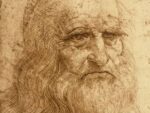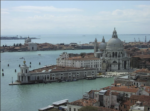Patrizio Di Massimo – Are Ere Ire
.jpg)
Con il titolo Are Ere Ire è presentato un nuovo corpo di sculture, dipinti, installazioni e performance. I lavori intrecciano polifonici leitmotifs del lavoro dell’artista come nuvole, nappe e cuscini uniti a modelli rappresentativi di oggetti in ferro, tablets reali e metaforici, tende in latex e disegni visionari.
Comunicato stampa
T293 è lieta di annunciare la terza mostra personale di Patrizio Di Massimo con la galleria. Con il titolo Are Ere Ire è presentato un nuovo corpo di sculture, dipinti, installazioni e performance. I lavori intrecciano polifonici leitmotifs del lavoro dell’artista come nuvole, nappe e cuscini uniti a modelli rappresentativi di oggetti in ferro, tablets reali e metaforici, tende in latex e disegni visionari. L’intera mostra si presenta come attrice e spettatrice di se stessa e al suo interno opera, performer e spettatore giocano ruoli flessibili e intercambiabili.
[…] In anni non lontani si poteva restare dinanzi agli altari senza limitazioni di tempo, nella piena tranquillità dell’area accesa dai lumi. Si entrava dalla porta principale del tempio con curioso interesse, il sole si faceva largo inondando di taglio le nubi, svelandole e nascondendole all’improvviso. Poi s’indugiava in penombra, stregati dagli effetti che il movimento della luce creava dialogando con forme e colori […]
Il titolo della mostra fa riferimento alle tre coniugazioni presenti nella lingua Italiana: la prima coniugazione verbale è quella dei verbi aventi l’infinito in –are, la seconda quella dei verbi con l’infinito in –ere, e infine per terza quella con i verbi in –ire. Famosa è la filastrocca insegnata ai bambini Italiani fin dai giorni delle scuole elementari che recita: “Are, Ere, Ire. L’Acca va a dormire!” che ne fa pertanto un titolo sin da subito familiare.
I tre suffissi stabiliscono però allo stesso tempo altrettanti soggetti attorno ai quali la mostra si sviluppa: le ‘are’ sono altari religiosi o mitici, davanti ai quali ci inchiniamo a pregare o a meditare; le ‘ere’ sono metafora del tempo, unico costituente vero della materia di cui siamo fatti; le ‘ire’ infine sono agenti mitologici presenti nello spazio della rappresentazione tanto quanto in quello della nostra immaginazione.
[…] Il bianco del cielo avvolgeva e permeava il tutto, facendo da sfondo a una sinfonia di trame e tessuti, oggetti antichi e nuovissimi; erano cuscini di fiaba, nappe gelate e tende di gomma. Attorno ai lumi le immagini si susseguivano ad altezze alternate, facendosi messaggere di un significato in apparenza semplice ma di un codice rigoroso e complesso […]
L’intera mostra mette in relazione oggetti domestici rappresentati bidimensionalmente tramite pittura e disegno con gli stessi oggetti presenti nello spazio in forma scultorea o installativa. Non c’è gerarchia reale tra le due parti e non è chiaro se uno dei due sia riflesso o il riconoscimento dell’altro. Piuttosto essi coesistono ed esercitano un costante processo di accettazione reciproca. Questo succede con i cuscini rappresentati tra le nuvole nei quattro grandi quadri a parete (Ara Ara Ara, Stream of Thoughts, Mindfulness of Emotions, and Cosmic Joke) in relazione a quelli scultorei presenti in diversi punti sul pavimento della galleria e realizzati in finta pelliccia, finta pelle e PVC. Lo stesso avviene tra i performers che siedono sopra i cuscini e giocano con la loro immagine in forma di avatar virtuale creata con l’applicazione Morfo per i dispositivi Apple. Ancora siamo noi donne e uomini a visitare la mostra in compagnia di altrettanti umanoidi dalle sembianze di giganti nappe colorate delle quali siamo duplicazioni.
[…] In esse erano raffigurate le epoche passate e future, le irose furie, moire mitologiche e paurose. E lì di fronte agli altari, si potevano sacrificare i pensieri e le emozioni. Ci s’inchinava solenni in cerca di concentrazione e il respiro scandiva un mantra interiore fatto di continue messe a fuoco. Tutto intorno era il reale e allo stesso tempo la proiezione di un viaggio interiore da percorrere […]
Le nappe sono per l’appunto: Are - di color rosa, costituita da una corda lunga quasi 80 metri che si attorciglia dall’estremità più alta fino al contatto con una gonna realizzata tramite tecnologia CNC, laccata dello stesso colore; Ere – di colore giallo fluorescente che coniuga una parte superiore a forma di vaso lavorata con una trama simile alla pelle di struzzo e con una parte inferiore di fili intrecciati; Ire - color menta o acqua marina, delicata e snob, con la lunga gonna e il busto e capo composto di sfere.
[…] Pulisce l’orizzonte, allontana lo sguardo, leva le stratificazioni […]
T293 gallery is pleased to announce the third solo show at the gallery of the Italian, London-based artist Patrizio Di Massimo. Titled Are Ere Ire, the project presents a new body of sculptures, paintings, installations and performances. The works composing the exhibition intertwine polyphonic leitmotifs of Di Massimo practice, such as clouds, tassels and cushions alongside representative models of iron objects, real and fictional tablets, latex curtains and whimsical drawings. The whole show is simultaneously actor and spectator of itself, and within it the work, the performer and the viewer play flexible and interchangeable roles.
[…] Not so long ago, we could stand before the altars without any limitation of time, in the full quietness of the area lit by the lamps. We used to walk in by the main door of the temple with curious interest, the sun shifted itself by flooding the clouds aside, unveiling and hiding them suddenly. Then we lingered in the shadow, enchanted by the effects that the movement of light was creating in its dialogue with shapes and colours. […]
The title of the show refers to the three patterns of conjugation of Italian verbs: the first conjugation is that with the infinitive form of verbs ending in –are; the second is that where the infinitive form ends in –ere, and finally the third for the verbs whose infinitive form ends in –ire. Since the very first day at elementary school, Italian kids are taught a very famous nursery rhyme that reads: ‘Are, Ere, Ire. The H goes to sleep’. Hence, the title immediately sounds familiar.
Nevertheless, such patterns of conjugation refer respectively to other three subjects around which the exhibition unfolds itself. ‘Are’ are the religious or mythical altars before which we bow in order to pray or to meditate; ‘Ere’ are metaphors of time, the only real component of the matter we all are made of; lastly, ‘Ire’ are mythological figures inhabiting both the space of representation and that of our own imagination.
[…] The white of the sky was winding and permeating everything, acting as a background for the symphony of textures and textiles, antiquities and brand new objects. Those were fairy pillows, frozen tassels and rubbery curtains. All around the lights, images followed one another at alternate heights, becoming harbingers of a seemingly simple meaning, yet of a strict and complex code. […]
Are, Ere, Ire links domestic objects bidimensionlly represented through paintings and drawings with the same objects assembled as sculptures or installations. There is no real hierarchy between these two sections, and it is not clear whether one is the reflection of the other, or its recognition. Rather, all these objects coexist, and also extert an endless process of mutual acceptance. This is what happens to the pillows pictured among the clouds in the big, four paintings on the wall (Ara Ara Ara, Stream of Thoughts, Mindfulness of Emotions, and Cosmic Joke) in relation to the sculptural pillows invading the gallery floor and made of faux fur, fake leather and PVC. The same process is embodied by the performers who lay among these pillows while playing with their own image as digital avatars recreated by the application Morfo on Apple devices. Furthermore, we as men and women visiting the exhibition are also accompanied by so many humanoids resembling giant, colourful tassels of which we are only duplicates.
[…] Past and future ages were depicted in them, the fierce furies, the mythological and scary moirai. And standing there in front of the altars we could sacrifice thoughts and emotions. We bowed solemnly in search of concentration and our breathing articulated an inner mantra made up by a continuous focus. All around there was the real, and at the same time, a projection of an intimate adventure yet to be undertaken. […]
Indeed, these tassels are: the pink Are, made of an 80 metres long rope that twistes itslef to the extent of reaching a skirt made by using CNC technology techniques, and lacquered in the same colour. The fluorescent yellow Ere, connecting its vessel shaped top with a texture resembling the patterns of a ostrich skin, as well as with a bottom made of bullion skirts. Ire, colour mint or sea water, fragile and snob, with a long cut skirt, and spherical head and chest.
[…] Cleaning the horizon, taking the gaze away, removing stratifications […]



